Giraffes, the gentle giants of the African savanna, have captivated human imagination for centuries with their extraordinary height and distinctive spotted coats. These magnificent creatures are as fascinating as they are unique, possessing remarkable adaptations that have allowed them to thrive in their natural habitat. From their incredibly long necks to their surprising sleep patterns, giraffes continue to amaze scientists and animal enthusiasts alike. In this article, we’ll explore fifteen fascinating facts about giraffes that showcase why these animals are truly one of nature’s most spectacular creations.
Record-Breaking Height

Giraffes hold the title of the tallest living terrestrial animals on Earth, with males (bulls) reaching heights of up to 18 feet (5.5 meters) and females (cows) growing to about 14 feet (4.3 meters). This impressive stature is primarily due to their extraordinarily long necks and legs. A giraffe’s legs alone can be taller than many humans, measuring about 6 feet (1.8 meters) in length. This remarkable height gives giraffes a significant advantage when it comes to feeding, as they can reach vegetation that other herbivores cannot access.
Despite their towering height, giraffes maintain an elegant silhouette and move with surprising grace across the savanna. Their height also serves as a defensive advantage, allowing them to spot predators from great distances. When fully grown, adult giraffes have few natural predators due to their size, though young giraffes remain vulnerable to lions, leopards, hyenas, and wild dogs until they reach maturity.
Neck Wonders

Perhaps the most iconic feature of the giraffe is its long neck, which can measure up to 8 feet (2.4 meters) in length. Surprisingly, despite this extraordinary length, giraffes have the same number of neck vertebrae as humans and most other mammals – just seven. The difference lies in the size of each vertebra, which can measure up to 10 inches (25 centimeters) long. This anatomical marvel allows giraffes to reach high branches of acacia trees and other tall vegetation that other herbivores cannot access, giving them a specialized feeding niche in their ecosystem.
The giraffe’s neck is not only an impressive feeding adaptation but also plays a crucial role in male competition for mates. Male giraffes engage in a behavior called “necking,” where they swing their necks and deliver powerful blows to each other’s bodies using their ossicones (horn-like structures) as weapons. These contests can determine dominance and mating rights, highlighting how the neck serves multiple evolutionary purposes beyond just reaching tall trees.
Cardiovascular Marvels
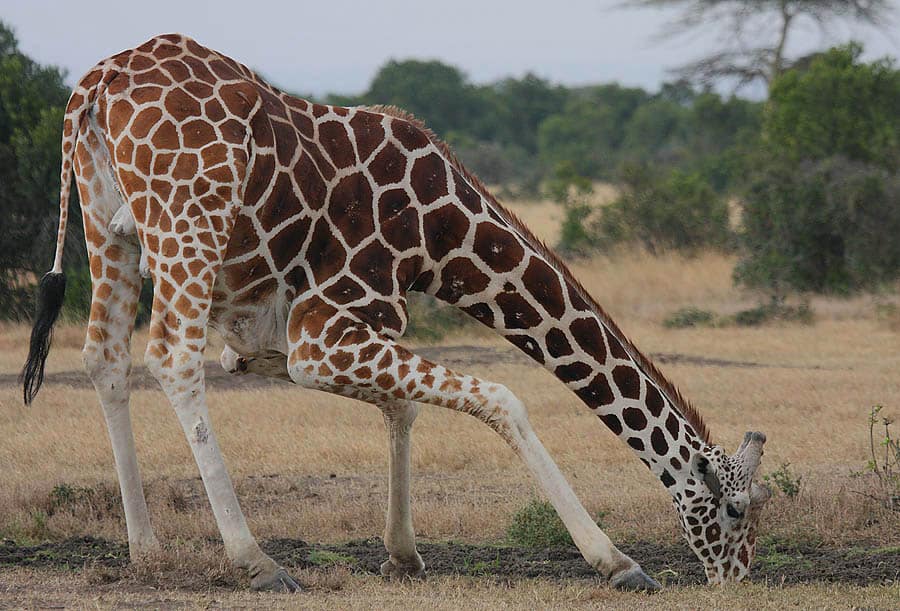
Giraffes possess one of the most remarkable cardiovascular systems in the animal kingdom, designed to overcome the significant challenges posed by their height. Their hearts are extraordinarily powerful, weighing around 24 pounds (11 kilograms) and measuring about 2 feet (60 centimeters) long. This powerful heart generates the highest blood pressure of any land animal – nearly twice that of humans – to pump blood all the way up their long necks to their brains against the force of gravity.
To prevent blood from rushing to their heads when they bend down to drink water, giraffes have evolved specialized valves in their neck veins and a complex network of elastic blood vessels. Additionally, they have thick, tight skin around their legs that acts like compression stockings, preventing blood from pooling in their lower extremities. Without these adaptations, giraffes would likely faint every time they lowered their heads to drink, making their unique cardiovascular system essential to their survival.
Unique Sleeping Habits

Giraffes have some of the most unusual sleeping habits in the animal kingdom, requiring only 30 minutes to 2 hours of sleep per day – one of the lowest sleep requirements among mammals. Most of this sleep occurs in short 5-10 minute naps throughout a 24-hour period. When taking these brief naps, giraffes often remain standing, sometimes with their necks curved slightly and their heads resting on their hindquarters. This ability to sleep while standing is crucial for their survival, allowing them to remain vigilant against predators and make a quick escape if necessary.
On rare occasions, giraffes will lie down to enter a deeper sleep state, but this makes them vulnerable to predators and is typically limited to areas where they feel secure. During these deeper sleep sessions, they fold their legs beneath their bodies and curve their necks around to rest their heads. Interestingly, even in captivity where predation is not a concern, giraffes maintain these minimal sleep patterns, suggesting this behavior is deeply ingrained in their biology rather than simply a response to environmental pressures.
Distinctive Coat Patterns

The giraffe’s coat features a distinctive pattern of irregular brown patches separated by lighter cream, white, or yellow lines. These patterns are not merely decorative; they serve as excellent camouflage in the dappled light of their woodland habitats. What many people don’t realize is that these patterns are unique to each individual giraffe – similar to human fingerprints – allowing researchers to identify specific animals in the wild. The patterns also provide effective temperature regulation by creating zones where air can circulate around the animal’s body.
Even more fascinating is that giraffe coat patterns appear to be partially hereditary, with offspring often displaying patterns similar to those of their mothers. Recent research has also suggested that certain pattern characteristics may be linked to survival rates, with some patterns potentially offering better camouflage or temperature regulation than others. Some scientists have even developed pattern-recognition software to track individual giraffes across large conservation areas, using their unique coat patterns as natural identification markers.
Powerful Kicks

Despite their gentle appearance, giraffes possess formidable defensive capabilities, particularly in the form of their powerful kicks. A single kick from an adult giraffe can deliver enough force to shatter a lion’s skull or break its spine, making even apex predators wary of approaching a healthy adult. Their legs can generate tremendous power, and they can kick in virtually any direction, including forward and to the sides. This 360-degree kicking ability combined with excellent vision makes adult giraffes challenging targets for predators.
Giraffes can also reach speeds of up to 37 miles per hour (60 kilometers per hour) when running, allowing them to outpace many predators over short distances. Mother giraffes are particularly known for their protective nature and will use their powerful kicks to defend their calves from potential threats. There have been documented cases of giraffes successfully fending off multiple lions through strategic positioning and well-timed kicks, demonstrating that these peaceful herbivores are far from defenseless in the face of danger.
Unusual Ossicones
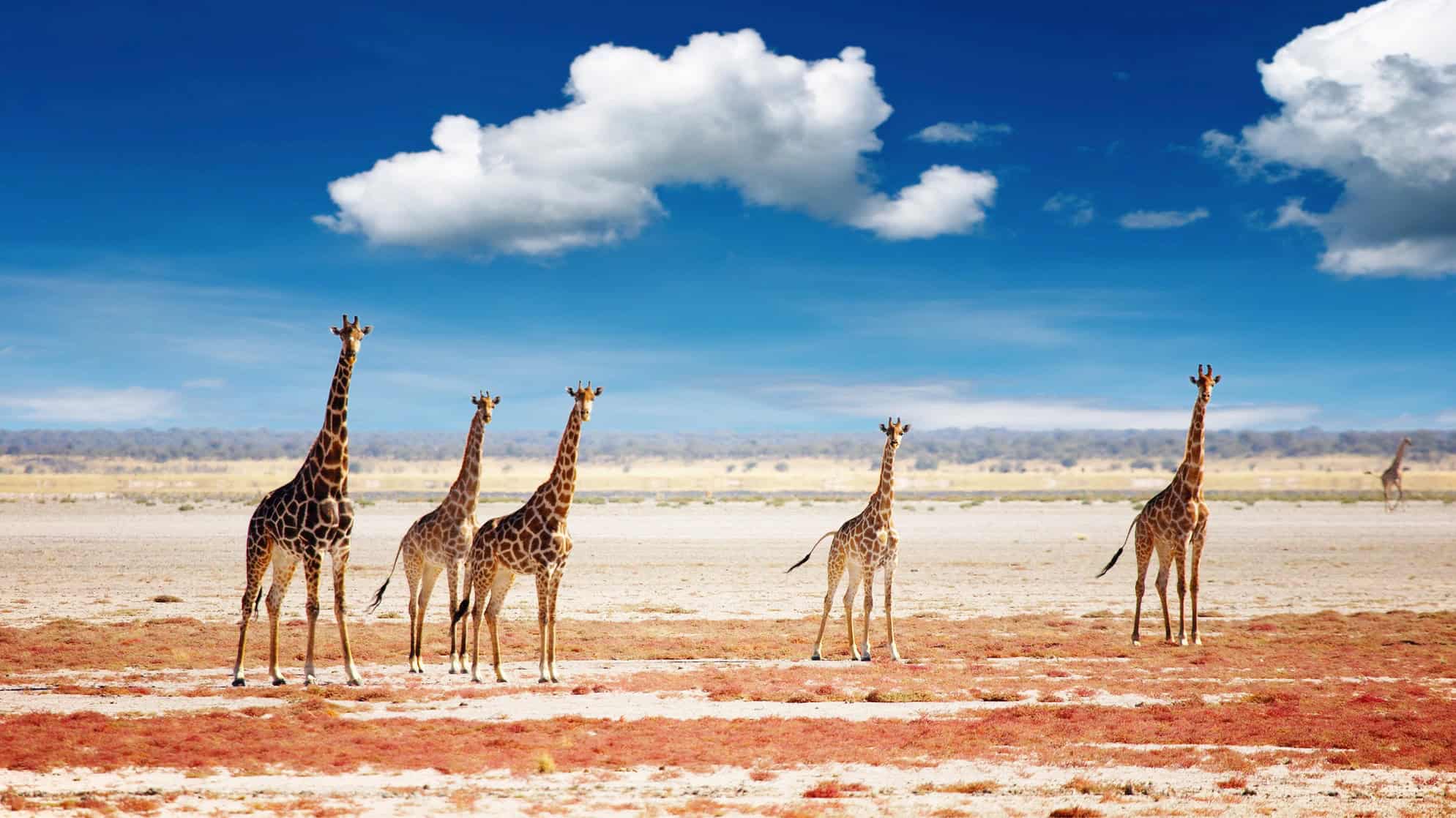
The horn-like structures on a giraffe’s head, called ossicones, are unique features found only in giraffes and their close relative, the okapi. Unlike true horns or antlers, ossicones are formed from ossified cartilage and are covered with skin and fur. Giraffes are born with these structures lying flat against their heads to avoid injury during birth, but they gradually become erect as the cartilage ossifies. Male giraffes typically develop thicker, more robust ossicones than females, often with bare knobs on top from fighting with other males.
As males age, calcium deposits form on their skulls, creating additional bumps that can make it appear as though they have more than the standard two ossicones. These calcium deposits can develop into sizeable knobs, particularly in older bulls, and may provide additional protection during necking contests. The ossicones serve multiple purposes, including thermoregulation (heat exchange through blood vessels), defense, and as formidable weapons during male competition for mates. The unique nature of these structures continues to interest evolutionary biologists studying the development of horn-like features across different animal species.
Specialized Diet
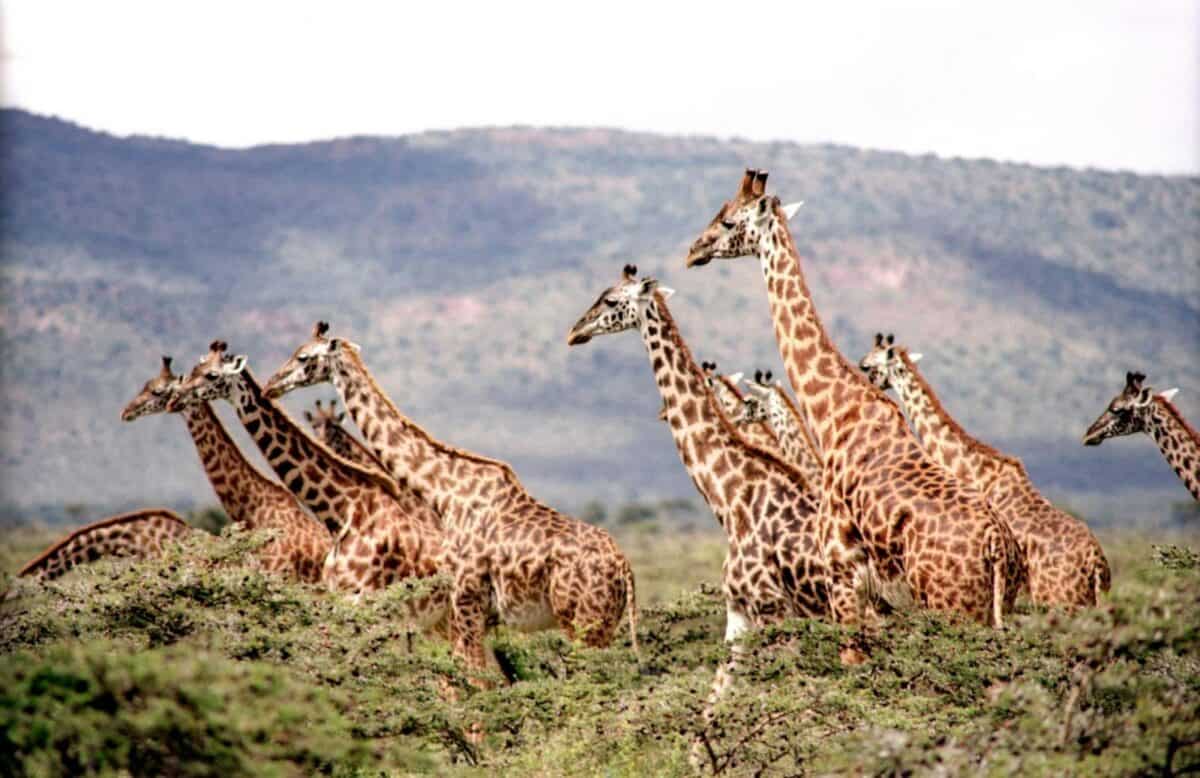
Giraffes are primarily browsers, specializing in feeding on leaves, buds, and shoots of trees and shrubs, particularly acacia trees. Their height gives them access to vegetation that other herbivores cannot reach, allowing them to avoid competition for food resources. A mature giraffe can consume up to 75 pounds (34 kilograms) of food daily and must spend a significant portion of its day feeding to meet its nutritional requirements. Their 18-20 inch (45-50 centimeter) prehensile tongues are specially adapted for their feeding habits, with a bluish-black color that helps protect against sunburn during long hours of foraging in the African sun.
Perhaps most remarkable is their ability to feed on acacia trees, which are armed with sharp, 3-inch (7.6-centimeter) thorns. Giraffes deftly maneuver their flexible tongues and lips around these thorns to strip the leaves without injury. Additionally, they have developed physiological adaptations to handle the chemical defenses of acacias, which produce tannins when browsed upon. Giraffes produce tannin-binding proteins in their saliva that neutralize these compounds, allowing them to feed on plants that would be toxic to many other animals. This specialized relationship between giraffes and acacias is a classic example of evolutionary adaptations in predator-prey relationships.
Social Structure
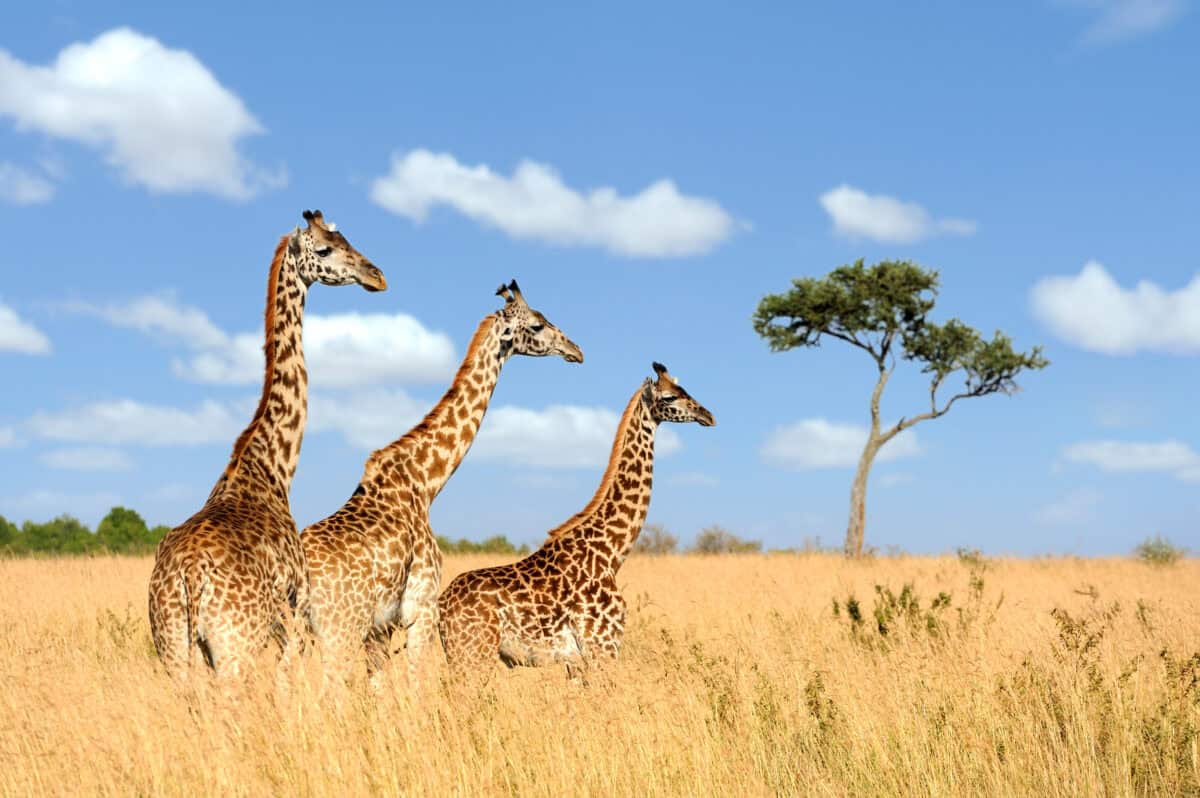
Contrary to earlier beliefs that giraffes had little social organization, recent research has revealed that they maintain complex social structures with multiple layers of organization. Giraffes live in loose, open herds with fluid membership, meaning individuals can leave and join different groups. However, these associations are not random; giraffes form preferential relationships, particularly among females who often form bonds with related individuals. These female social groups sometimes function as nursery herds, where mothers take turns watching over young calves while others feed.
Male giraffes have a different social pattern, typically becoming more solitary as they mature and only joining female herds when seeking mates. They establish dominance hierarchies through necking contests, with dominant males gaining greater access to receptive females. Interestingly, studies have shown that older female giraffes play important roles in giraffe societies, similar to matriarchs in elephant herds, though not as rigid. They appear to provide leadership and knowledge of resources, particularly during challenging environmental conditions. This complex social behavior suggests that giraffes possess greater social intelligence than previously recognized.
Silent Communication
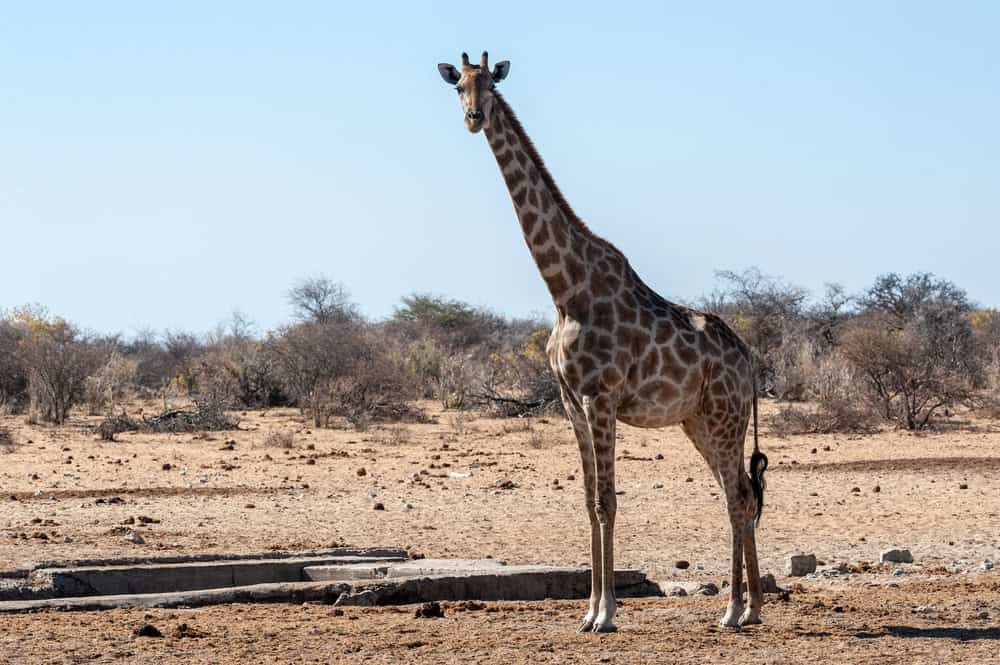
For many years, scientists believed giraffes were largely silent animals, earning them the nickname “silent giants.” However, recent research has discovered that giraffes actually do communicate vocally, just at frequencies too low for human ears to detect. They produce a humming sound at night at about 92 Hz, which researchers believe may be a form of communication between individuals when they cannot see each other in darkness. This infrasound communication is similar to methods used by elephants and some whale species, allowing sound to travel over long distances.
Beyond these low-frequency vocalizations, giraffes communicate through a variety of visual signals and body language. They use their tails, ears, and posture to signal alertness, aggression, or submission. Mothers and calves maintain contact through visual cues and occasional soft calls. Giraffes also engage in mutual grooming behavior, which strengthens social bonds. Their communication system, while subtle compared to more vocally expressive species, is sophisticated and well-adapted to their open habitat where visual signals can be seen from great distances.
Reproduction and Calf Development
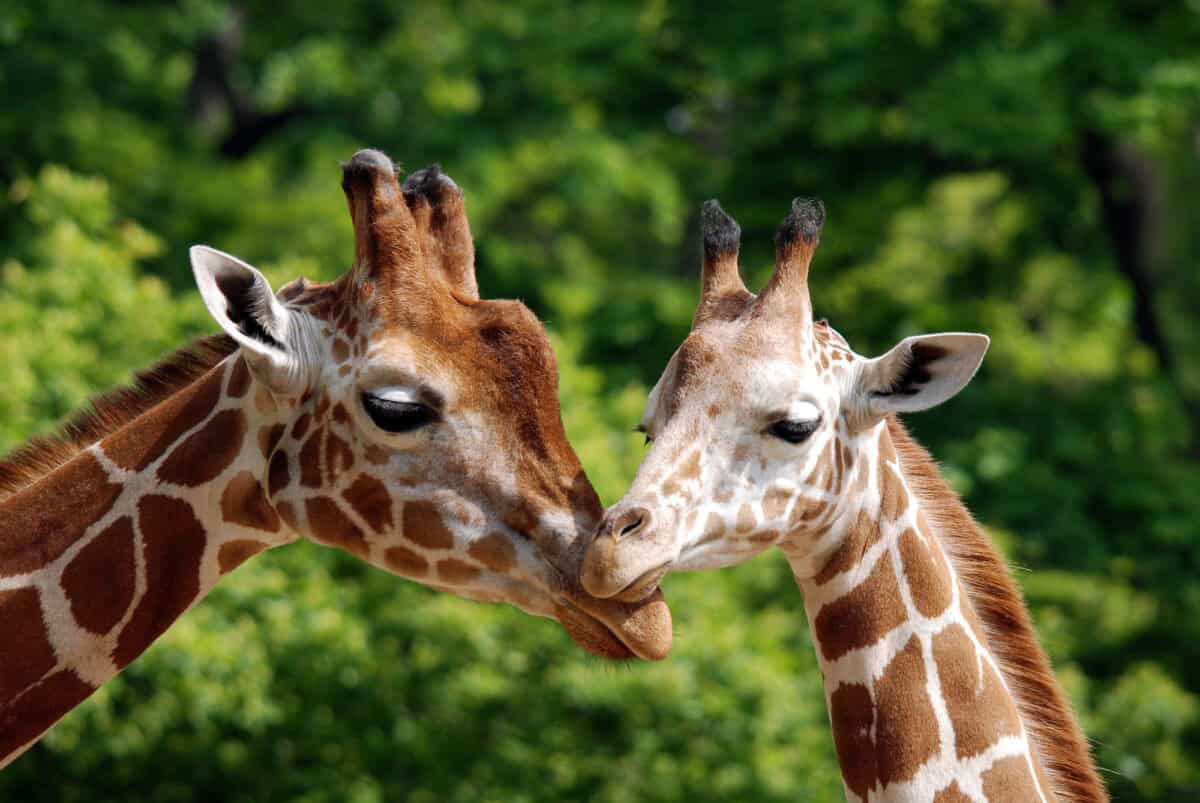
Giraffe reproduction involves several fascinating adaptations to accommodate their unique physiology. Female giraffes have a gestation period of around 15 months, one of the longest among land mammals. When it comes time to give birth, the mother remains standing, causing the newborn calf to drop approximately 6 feet (1.8 meters) to the ground. This dramatic entrance to the world serves an important purpose – the fall breaks the umbilical cord and stimulates the calf to take its first breath. Despite this jarring introduction to life, newborn giraffes are remarkably precocious, typically standing within 30 minutes and running within 10 hours of birth.
Giraffe calves are born measuring around 6 feet (1.8 meters) tall and weighing approximately 150 pounds (68 kilograms). They grow rapidly, gaining height at a rate of nearly an inch per day during their first week. Mother giraffes are devoted parents, fiercely protecting their young from predators. However, despite this protection, mortality rates for giraffe calves can be as high as 50% in their first year due to predation. Those that survive grow quickly, with females reaching sexual maturity around 4 years of age and males around 7 years, though males typically don’t successfully mate until they’re closer to 10 years old due to competition from more dominant bulls.
Taxonomic Reclassification
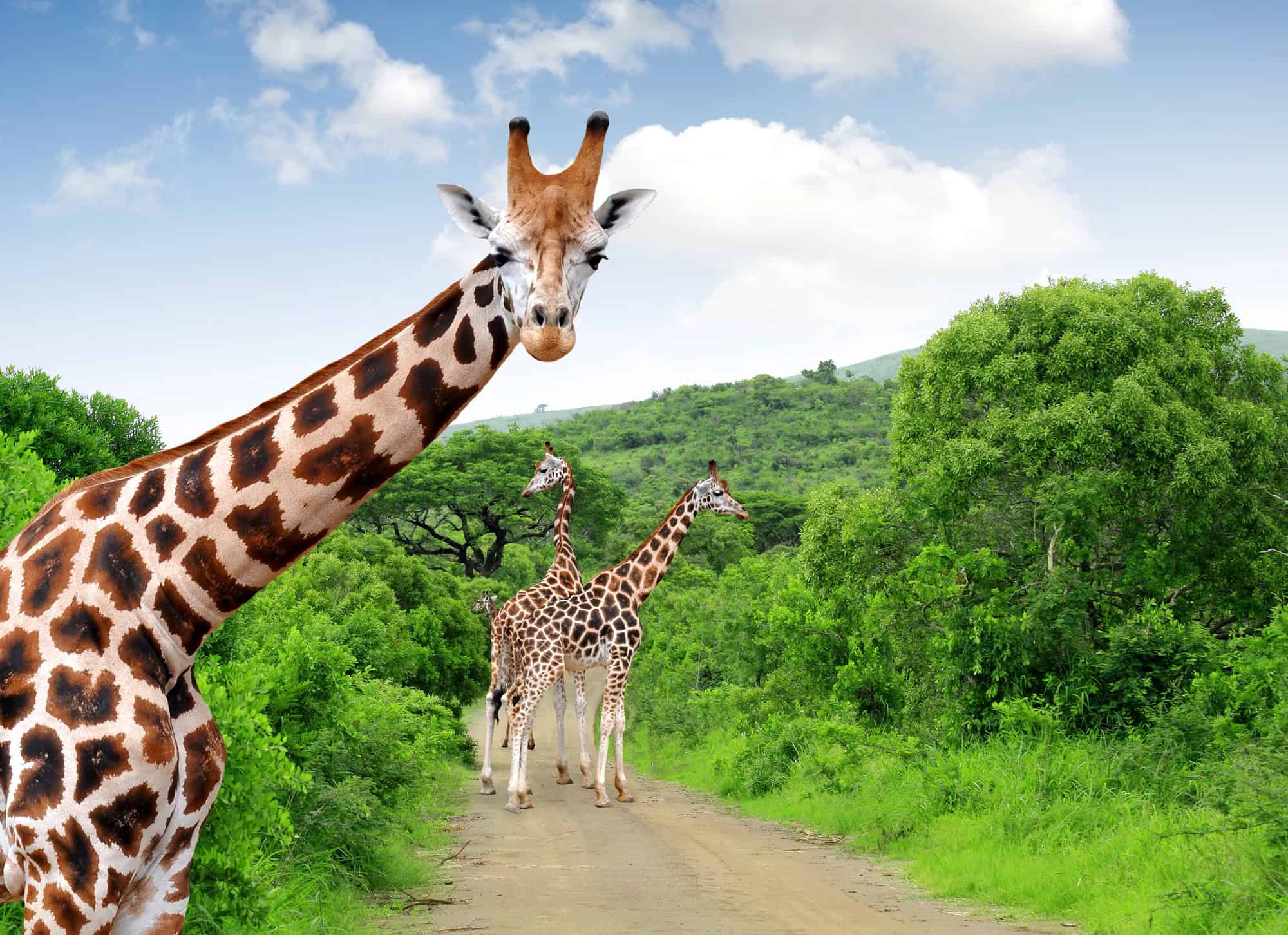
The taxonomic classification of giraffes has undergone significant revisions in recent years. Traditionally, scientists recognized a single giraffe species (Giraffa camelopardalis) with nine subspecies distinguished by their coat patterns and geographic distribution. However, groundbreaking genetic research published in 2016 suggested that giraffes actually comprise four distinct species that have been evolving separately for 1-2 million years: the northern giraffe (Giraffa camelopardalis), southern giraffe (Giraffa giraffa), reticulated giraffe (Giraffa reticulata), and Masai giraffe (Giraffa tippelskirchi).
This reclassification has important implications for conservation efforts. What was once considered a single species with a concerning but not critical conservation status now represents multiple species, some of which have much smaller populations than previously recognized. For example, the northern giraffe has fewer than 5,000 individuals remaining in the wild. While some taxonomists still debate this four-species model, the genetic evidence has led many conservation organizations to adopt the new classification system. This taxonomic revision highlights how our understanding of even such iconic animals continues to evolve with advances in genetic research methods.
Conservation Status
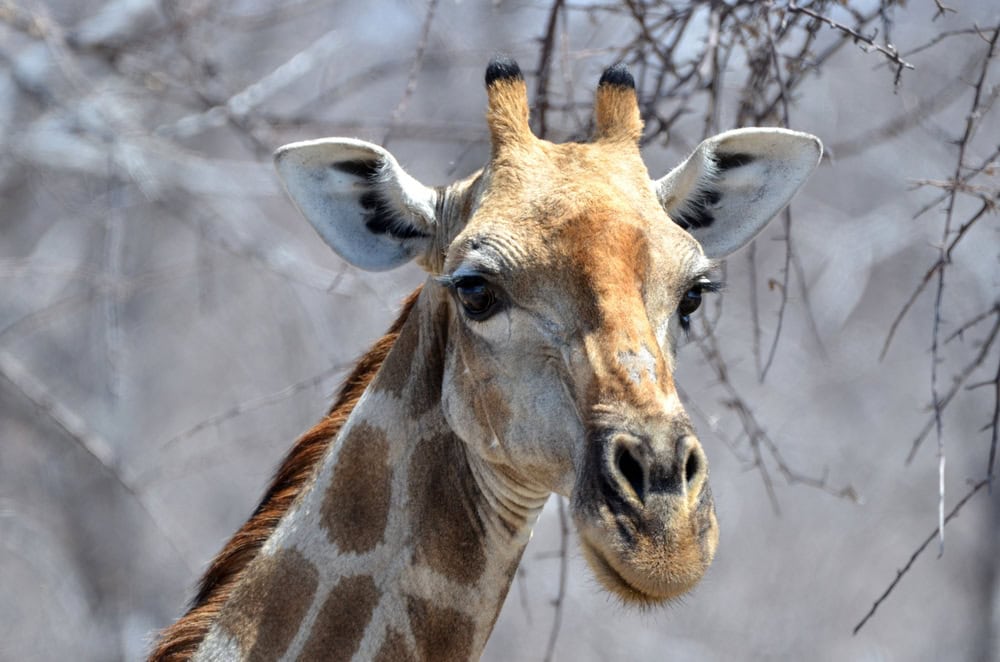
Giraffes have experienced a dramatic population decline over the past three decades, with numbers dropping by approximately 40% since the 1980s. This alarming decrease has led the International Union for Conservation of Nature (IUCN) to classify giraffes as “Vulnerable” on their Red List of Threatened Species. Some specific populations, particularly those in the northern range, are in even more dire situations and are classified as “Critically Endangered.” Current estimates suggest fewer than 100,000 giraffes remain in the wild, compared to approximately 155,000 in the late 1980s.
The primary threats to giraffe populations include habitat loss due to expanding agriculture and human settlements, illegal hunting (poaching) for their meat and hides, and civil unrest in parts of their range. Climate change is also emerging as a significant threat, altering vegetation patterns in their habitats. Conservation efforts are underway across Africa, including habitat protection, anti-poaching initiatives, community education programs, and careful population monitoring. Several organizations, including the Giraffe Conservation Foundation, are working specifically on giraffe conservation, conducting research and implementing protection measures to ensure these magnificent animals don’t disappear from the wild.
Evolutionary History

The evolutionary journey of giraffes represents one of the most fascinating examples of specialized adaptation in mammals. The giraffe family (Giraffidae) first appeared approximately 25 million years ago during the Miocene epoch, diverging from other even-toed ungulates. Early giraffe ancestors were much smaller and more deer-like in appearance, with shorter necks than modern giraffes. The fossil record shows a gradual elongation of the neck vertebrae over millions of years, likely in response to competition for food resources, as longer-necked individuals could access leaves that shorter herbivores couldn’t reach.
Today, the only other surviving member of the Giraffidae family is the okapi (Okapia johnstoni), often called the “forest giraffe,” which inhabits the dense rainforests of central Africa. Despite its zebra-like striped hindquarters, the okapi is the giraffe’s closest living relative, though it lacks the extreme neck elongation of its savanna-dwelling cousin. The divergence between giraffes and okapis occurred approximately 11-12 million years ago, with each species adapting to different ecological niches. This evolutionary history makes the giraffe family.
Conclusion:

Giraffes are far more than just long necks and gentle eyes—they are a marvel of evolutionary design and ecological importance. From their towering height and specialized cardiovascular system to their unique vocalizations and complex social structures, giraffes reveal layers of biological and behavioral complexity that continue to surprise scientists and fascinate animal lovers alike. Each fact about them underscores how these majestic herbivores have adapted to life in the savannas and woodlands of Africa, shaping and being shaped by the environment around them.
Yet, despite their iconic status and appeal, giraffes face growing threats from habitat loss, poaching, and human-wildlife conflict. Their populations have declined significantly in some regions, earning them the nickname “the silent extinction.” As we deepen our understanding of giraffes and their role in ecosystems, we also deepen our responsibility to protect them. Celebrating the wonders of giraffes must go hand in hand with efforts to ensure their survival for generations to come.
- 14 Fascinating Facts About Giraffes - August 10, 2025
- 11 Animals That Survive Brutal Winters in the Rockies - August 10, 2025
- The Deepest Dwelling Sharks That Lurk Beneath US Waters - August 10, 2025

